Hardings Field

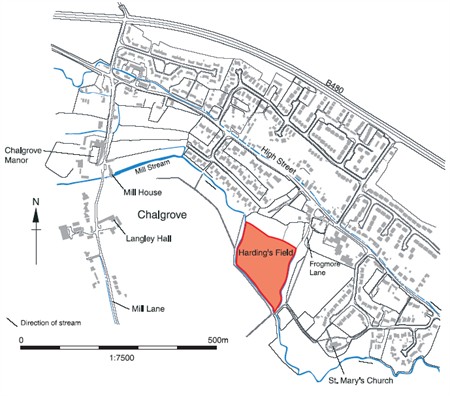 Site Location reproduced by kind permission of Oxford Archaeology. Reproduced from the Ordnance Survey on behalf of the controller of Her Majesty's Stationary Office, © Crown Copyright. Licence AL 100005569.
Site Location reproduced by kind permission of Oxford Archaeology. Reproduced from the Ordnance Survey on behalf of the controller of Her Majesty's Stationary Office, © Crown Copyright. Licence AL 100005569.

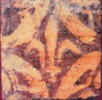
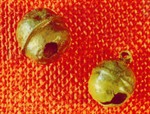
Hardings Field, Chalgrove is the site of one of the most fully excavated medieval, moated manors in England.

Excavations revealed evidence of a pre-moat occupation dating from the late C12 to early C13, succeeded by the construction of a moated manor house in the mid C13 century that underwent considerable modernisation over the following 200 years, until it was demolished in the late C15.
A significant amount of documentary evidence fits well with the identification of four phases of occupation, three of which by eight generations of the Barentin family, and a fifth phase relating to the final use and eventual demolition of the house and buildings after the family had moved to Little Haseley.
Artefacts included many fine wares, some continental, amongst the 2915 sherds of pottery that were recovered, and decorated floor tiles, coins, objects of metal, bone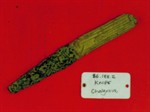 , and ivory, vessel and window glass, and some slags. The 11,105 bones and 2265 shells of marine molluscs that were collected, together with seeds and charcoal are the source of much information about the ecology, economy, diet, husbandry, pathology and butchery.
, and ivory, vessel and window glass, and some slags. The 11,105 bones and 2265 shells of marine molluscs that were collected, together with seeds and charcoal are the source of much information about the ecology, economy, diet, husbandry, pathology and butchery.
 The site was discovered during aerial reconnaissance in July 1976 by Richard Chambers, Oxford Archaeological Unit, now Oxford Archaeology, who, together with James Bond, Oxfordshire County Council Department of Museum Services, carried out an earthwork survey and identified two moated islands.
The site was discovered during aerial reconnaissance in July 1976 by Richard Chambers, Oxford Archaeological Unit, now Oxford Archaeology, who, together with James Bond, Oxfordshire County Council Department of Museum Services, carried out an earthwork survey and identified two moated islands.  In November that year, when Oxfordshire County Council decided to prepare the field to use as a playing field by covering with topsoil, R Chambers, with the help of local farmer, Adrian Nixey, evaluated the site with three trenches, confirming the presence of building remains.
In November that year, when Oxfordshire County Council decided to prepare the field to use as a playing field by covering with topsoil, R Chambers, with the help of local farmer, Adrian Nixey, evaluated the site with three trenches, confirming the presence of building remains.
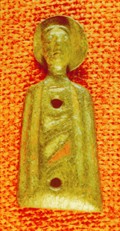
The limited availability of topsoil brought about the decision by the County Council, in the spring of 1977 to lower the level of the earthworks. With such potential damage in mind, further investigations were made and the remains of both domestic and agricultural buildings were revealed. Inevitably damage did occur when the field was stripped of topsoil during the very wet conditions of that summer but a watching brief by R Chambers produced a partial plan of some outbuildings and enabled further identification. Due to the waterlogged conditions further levelling was delayed until the following spring. Excavations continued from May 1978 until December, under the direction of Philip Page, after which the site was again left open.
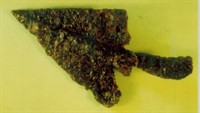
In the spring of 1979 the Department of the Environment recommended the scheduling and preservation of the site, funding further, limited excavation and preparation of the site for burial and partially funding the cost of burial.
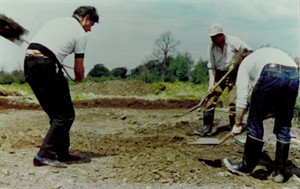
The whole investigation had been carried out with very limited resources, using labour from the Manpower Services Commission job-creation scheme, the good will of landowners, and volunteers from Chalgrove Local History Group and other residents. The failure to see the post examination programme through to publication was mainly due to the limited resources having to be diverted to other sites, mostly also under serious threat.
However, twenty-five years on, the range and quality of the information recovered remained outstanding and had, as yet now, considerable research value so, with the help of a grant from English Heritage, Oxford Archaeology, www.oxfordarch.co.uk, pursued the publication of a report. The resultant monograph, published in 2005 and entitled 'Barentin's Manor', is available through Chalgrove Local History Group.
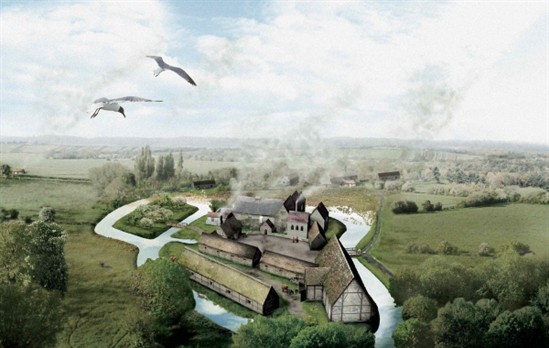
Reproduced by kind permission of Oxford Archaeology.
January 2013.